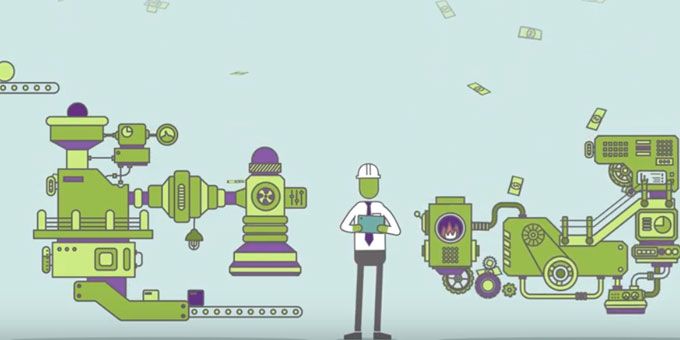To truly improve the bottom and optimize energy efficiency correctly, you need to link all types of data, whether that is energy data, production throughput, quality, or even the weather outside.
 Resource Optimization Software
Resource Optimization Software

Elhay Farkash | Lightapp
Who is Lightapp and what is your mission?
Lightapp is a resource optimization and business automation software company with a focus on manufacturing and industrial facilities. We leverage data from the factory floor and across the organization. Our technology analyzes and provides insights to drive action and help plants operate more responsibly.
Our mission is to make it easy for industrial facilities to run their business in a more profitable and sustainable manner. We do this by developing tools necessary to measure, communicate, analyze, and share performance indicators and related activities within and between leading organizations.
Why have industrial facilities as a whole paid little attention to energy consumption and truly minimizing carbon emissions at their plants, instead focusing on other optimization tactics to improve profitability?
Industrial facilities tended to treat energy as a tax rather than a resource that can be managed. This is why we see so little measurement devices, such as power meters on the field. Our methodology and tools make it very simple to manage the energy and its usage, which in turn enables cost savings and other benefits such as the emission reductions, as well as lower maintenance requirement and less break.
How has big data (specifically, data analytics and Industrial IoT) become so strategic for manufacturers today both in improving overall profitability and sustainability?
Digitization of the plant is crucial for manufacturers today, not just to improve profitability and sustainability, but for survival. Slowly but surely, factories big and small, are investing in new software, meters, and sensors to transform the way their businesses are run. Those that don’t make the investment in meters, sensors, software, and employees to leverage big data will experience shrinking margins and be swallowed up by the competition.
What should the industrial sector be doing to improve the bottom line and also fully optimize energy efficiency?
The industrial sector should not separate energy optimization into its own box. All processes within a manufacturer are related and they should be treated as such. To truly improve the bottom and optimize energy efficiency correctly, you need to link all types of data, whether that is energy data, production throughput, quality, or even the weather outside.
Tell me more about Project Engage. Who did you partner with, what was the overarching goal of the program and what were the results?
Project Engage is a $5M research project sponsored by the California Energy Commission in conjunction with UC Berkeley, MIT, and the University of Chicago. The program helped deploy Lightapp technology in over 100 California manufacturers. It was designed to demonstrate how resource optimization software, such as Lightapp, is used in manufacturing facilities and how it impacts decision making and energy consumption. The end goal of Project Engage is to influence energy policy and help make California manufacturers more competitive and sustainable.
Can manufacturers expect similar results if they modernized their resource management process and worked with Lightapp?
Yes, and they can expect even more because the impact that Lightapp has only grows over time. Project Engage was limited to one year, but becoming a smart factory is a process that takes years to do correctly. As our customers grow, connect more data, and automate processes, the efficiencies and impact Lightapp has on the organization multiplies.
What does the future of manufacturing look like with new and cutting edge technologies?
The future of manufacturing looks very lean, both in energy resources that are required for production, as well as machines (and therefore maintenance). It is all part of the commoditization of manufacturing resources. I believe it will become much more simpler with standardization of machinery and controls data. The data coming from the manufacturing lines as well as the tools to digest the data will become transparent and readily available everywhere to anyone.
.jpg)
About Elhay Farkash
Elhay Farkash is CEO and co-founder of Lightapp, an energy and process optimization software company that works with hundreds of manufacturing plants, OEM suppliers and utilities around the world. Prior to founding Lightapp, Elhay worked in business development at Oracle and spent six years in the Israel Defense Force. Lightapp’s mission is to help manufacturing businesses run in a more sustainable and responsible manner by making decisions backed up by data.
The content & opinions in this article are the author’s and do not necessarily represent the views of ManufacturingTomorrow
Featured Product

